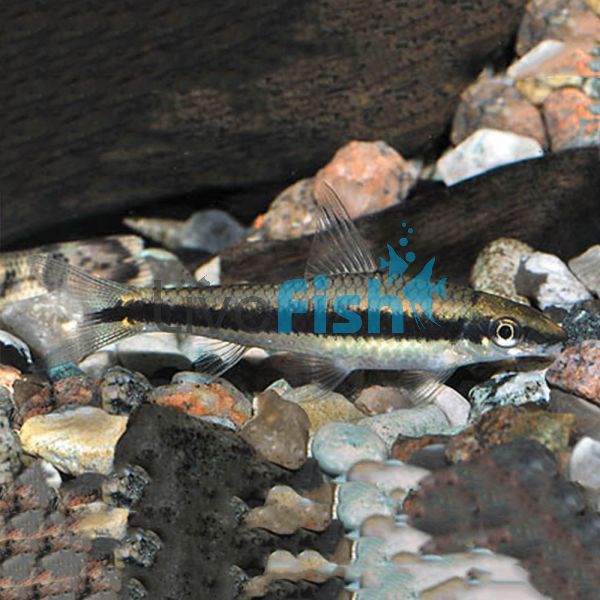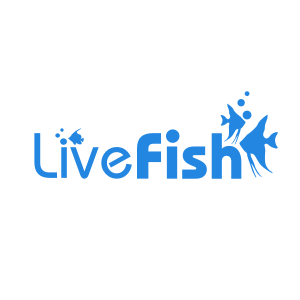Siamese Flying Fox - Algae Eater 5cm
A globally popular fish due to its amazing algae-eating capabilities, the Siamese algae eater is a must-have fish for planted aquariums. Siamese algae eaters are an essential clean-up crew member for well-planted tanks, as they ensure string and hair algae never get out of control. These fish are not exactly the most colourful fish and have earthy browns, silvers, and jet-black stripes from head to tail which gives them their characteristic look.
- Buy 10 for $11.10 each and save 20%
- Buy 20 for $9.71 each and save 30%
Siamese Algae Eater
A globally popular fish due to its amazing algae-eating capabilities, the Siamese algae eater is a must-have fish for planted aquariums. Siamese algae eaters are an essential clean-up crew member for well-planted tanks, as they ensure string and hair algae never get out of control. These fish are not exactly the most colourful fish and have earthy browns, silvers, and jet-black stripes from head to tail which gives them their characteristic look.
The Siamese algae eater however is still readily purchased despite its bland colour scheme as they make for a discrete addition to aquascaped and planted tanks where the scape is the general highlight. Siamese algae eaters aside from their algae-eating capabilities though are just interesting fish to keep, especially when they are in groups as they usually stick together in a shoal. These are fish that usually spend most of their time near the bottom of the aquarium or swiftly gliding along with the plants and hardscape.
They are also hardy and easy to care for tropical aquarium fish but do get fairly large maxing out at 14-15 cm which is why they are best for larger planted tanks. Siamese algae eaters are also perfect in a community aquarium setting and are fine with even the smallest of fish as long as they aren’t newborn fry or shrimp. Siamese algae eaters are not easy to breed often requiring specific environmental queues to trigger spawning behaviour, coupled with this finding males and females in near impossible as they do not have any clear distinguishing factors. Siamese algae eaters are naturally found in the waterways of Southeast Asia.
Tank Recommendations for your Siamese Algae Eaters
Siamese algae eaters max out at around the 15cm mark and get fairly round meaning they are not suitable for smaller tanks. The bare minimum would be an aquarium which is 75 liters and has a good footprint due to its fairly active bottom-dwelling nature. The substrate of the aquarium is not a concern for these fish however they will love a well-planted aquarium and lots of surface area to graze on. The only precaution which should be talked into consideration for Siamese algae eaters is they are avid jumpers so a good aquarium lid is a must. This species is most active during the day when the lights are on.
Suitable Tank Buddies
Siamese Algae Eaters are extremely peaceful fish with no fin nipping tendencies, they can be kept with a vast range of peaceful community fish.
Usually Compatible
Tetras, gouramis, corydoras, angelfish, cherry barbs, and common community fish species.
Sometime Compatible
dwarf cichlids such as rams and large peaceful cichlids such as Uaru or Severums which might outcompete for food.
Rarely Compatible
Shrimp and large aggressive species such as African cichlids, Oscars, and Jaguar cichlids.
Feeding your Siamese Algae Eaters
Though Siamese algae eaters are sold for their algae-eating behaviour this is not their only diet. Without added supplementation, in their diet, they will begin to starve which is why they should also be fed a varied diet of pellets, flakes, frozen and live foods. Because of their primarily bottom-dwelling mentality, slow sinking food is best fed to them as this also allows other water column tank mates to eat as well. Feeding should occur once a day and it is best to do so when the lights are on during the day.
| Scientific Name | Crossocheilus Oblongus |
|---|---|
| Care Level | Easy |
| Common Names | Crossocheilus Oblongus |
| Diet | Omnivore |
| Fish Family | Cyprinidae |
| Lifespan (years) | 10 |
| Max. Length (cm) | 15 |
| Min. Tank Volume (l) | 75 Liters |
| Origin | South Asia |
| Sociability | Peaceful |
| Venomous | No |
| Water Conditions | 24-28° C, pH 6.50 - 7.5 |
-
0Hey, I was just wondering if you had any information on breeding the Siamese Flying Fox - Algae Eater and how to distinguish between male and female?Read Detail
 Submited by: Christian Robertshaw
Submited by: Christian Robertshaw
 25 Jul 2021
25 Jul 2021
-
Hi, These fish are not easy to breed yourself as they often bred in farms with the aid of hormones and special techniques to trigger spawning. Sexing is also difficult as no external differences are visible, other than that the females may be slightly fatter when fully matured.Answered by Admin on 04 Jan 2022
-
- 1




